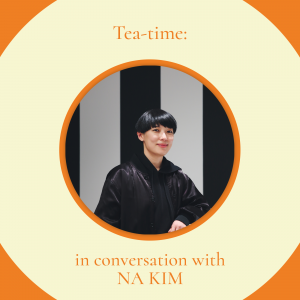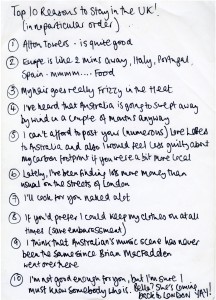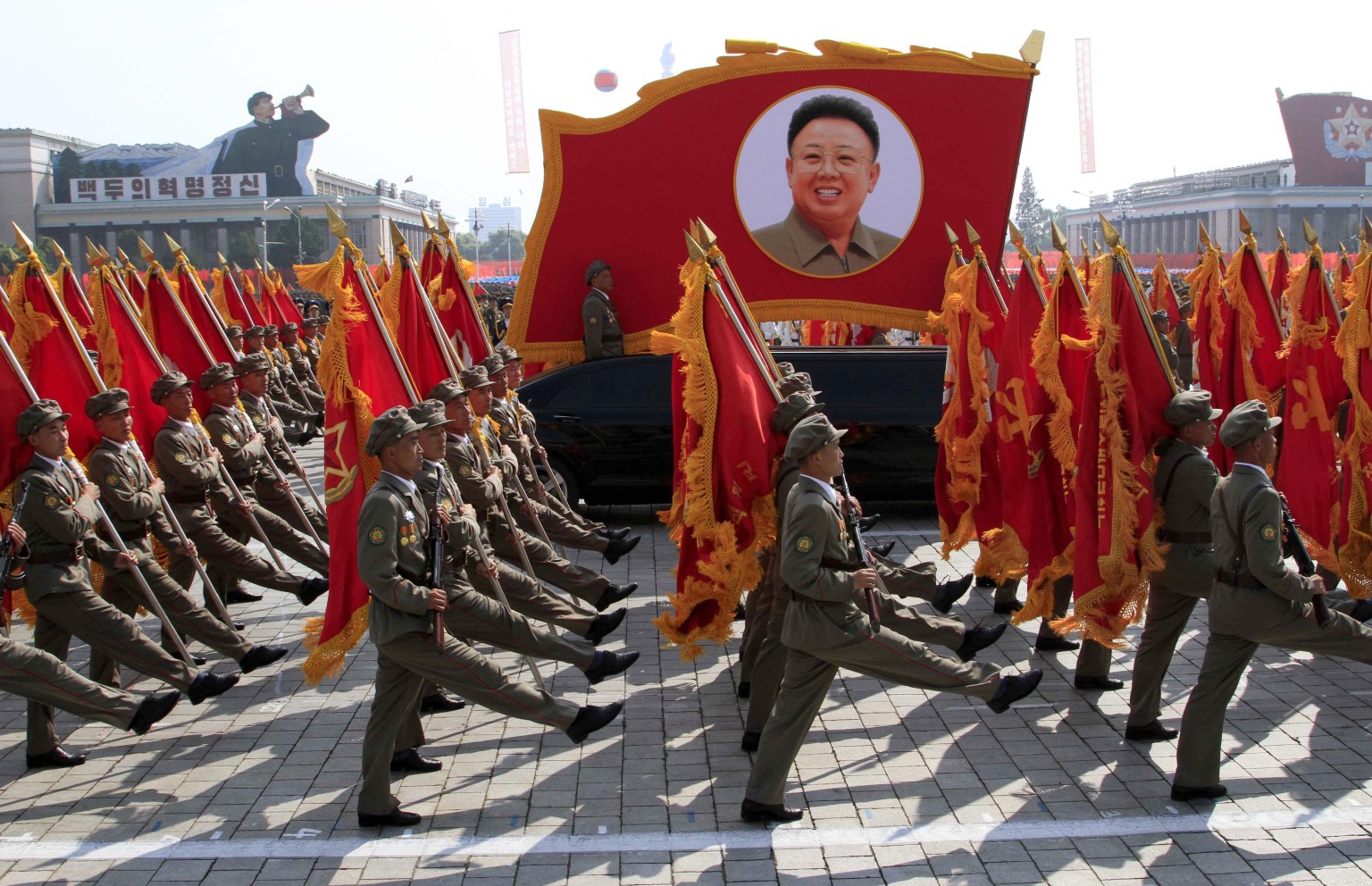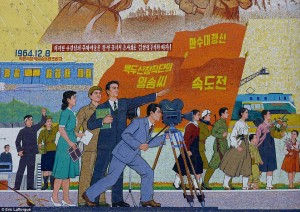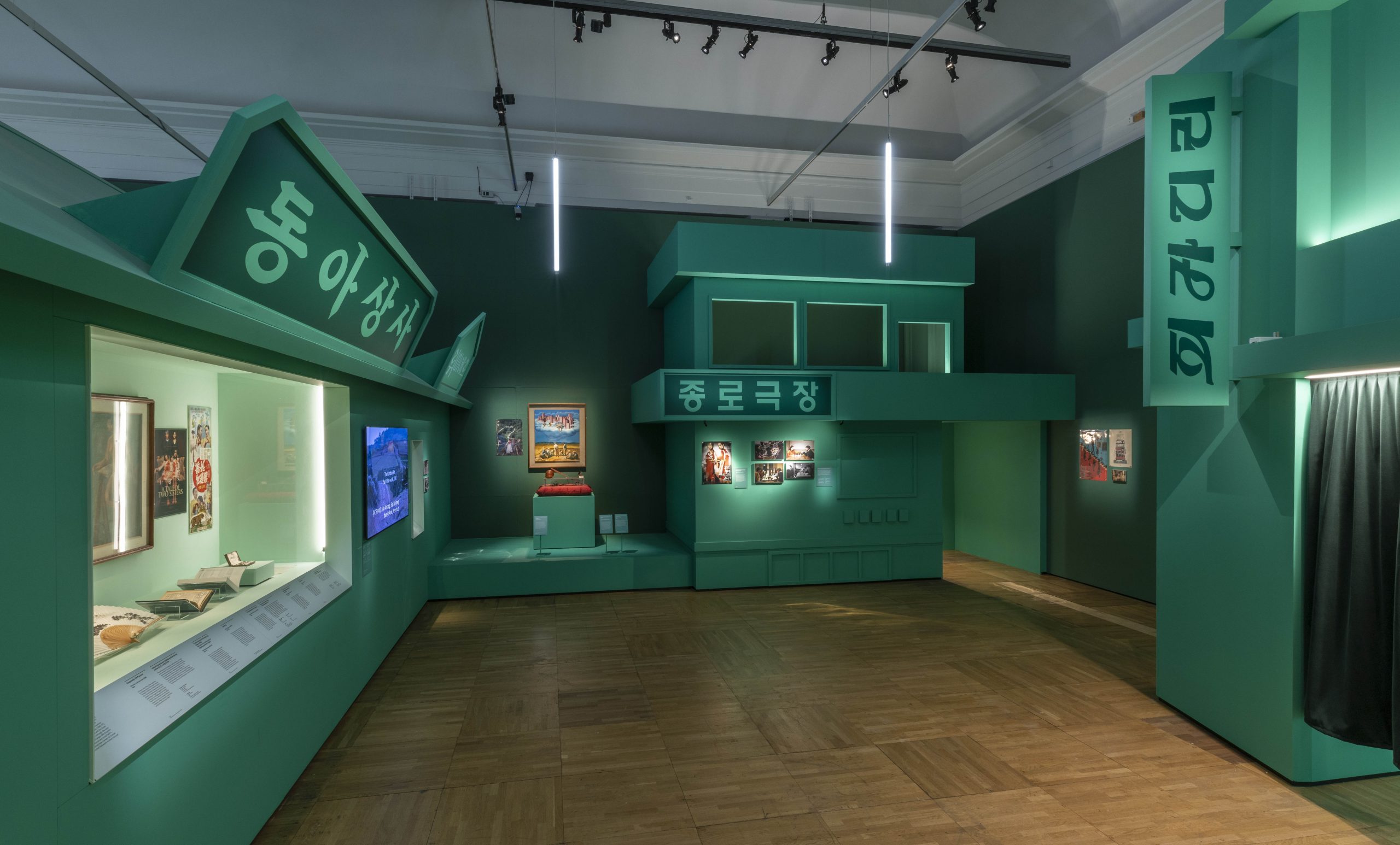
What’s Left Behind: ‘Hallyu! The Korean Wave’ at the Victoria & Albert Museum
by Dowon Jung | April 10, 2023
As the museum guide opens the door into the exhibition, I’m immediately certain that the experience will be one of sensory overload. The first room introducing the Hallyu! The Korean Wave exhibition at the Victoria & Albert Museum features a collection of intensely flashing scenes, each depicting a different parody of Gangnam Style, the iconic song by the Korean rapper, Psy, which went viral in 2012. It sets the tone for the rest of the exhibition, which is eager to impress upon the viewer that contemporary Korean culture is counter-cultural, populist, and above all, meteoric.
Perhaps the exhibition’s key feature, as the first in the UK to present Korean pop culture as its main subject, is the way it seeks to situate the current moment in Korean culture within a wider historical context. Thus, the first section of the exhibition provides a crash course of modern Korean history through a series of tragedies – colonial rule, internecine warfare, and dictatorial violence – to contrast the dynamism of its present culture. The phrase used by the exhibition, “from rubble to smartphones”, especially highlights the rapid modernisation undertaken by Korean society and the so-called “compressed modernity” that this created.
Following this history lesson, the viewer is bathed in turquoise and directed to the exhibition’s second section, which shows the rise of Korean cinema and mass culture. Replicas of 80s-era Korean storefronts built inside the exhibition space complete the ambience. Highlights amongst these displays of iconic movie props and costumes are the pink uniforms of the guards from Squid Game (2021) and a recreation of the semi-basement toilet from Parasite (2019). I have no way to prove this, but it seems they’ve managed to recreate the distinct damp and mouldy smell characteristic of these underground flats in Korea (itself an important motif within the movie).
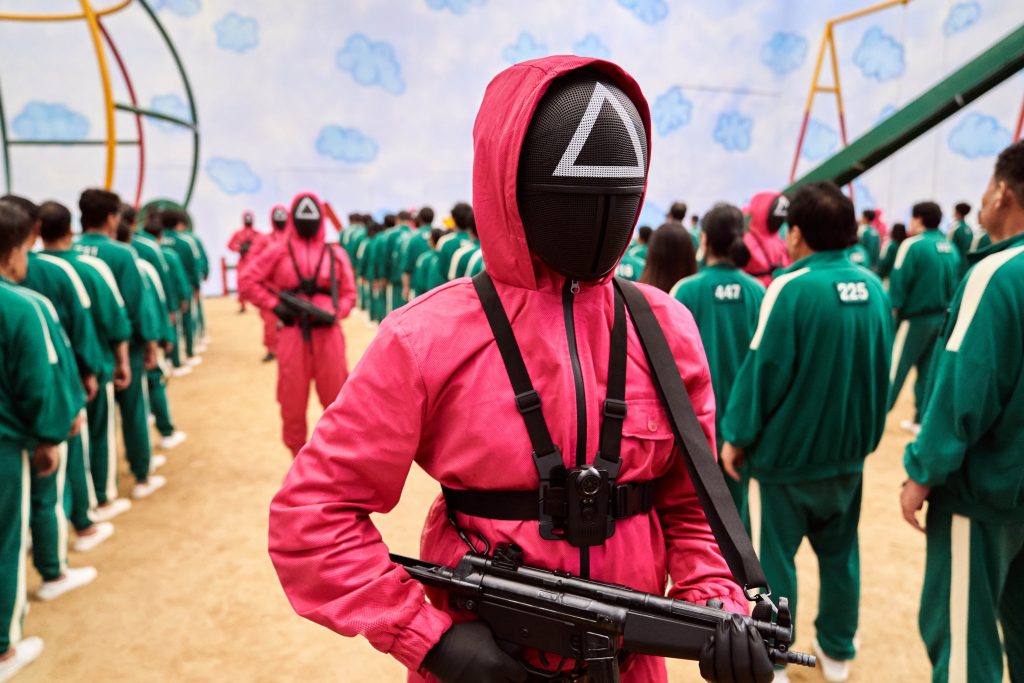
A Netflix Original Series. Squid Game Artwork © 2021 Netflix. All Rights Reserved
I cannot compliment enough lead curator Rosalie Kim and creative lead Na Kim’s achievement in constructing perhaps the most thrilling and animated exhibition space I’ve encountered. This is especially true in its discussion of K-Pop. In this third section, the exhibition bleeds into a bright red space, capturing the electrifying ecstasy associated with these celebrity musicians and the fanatical followings they generate. Just as contemporary culture is multi-faceted and multi-media, the exhibition, too, is a multisensory experience that constantly provides the viewer with things to look at. This is all achieved without distracting from the core themes of optimism and excitement. And maybe it’s the deep bass thumping that’s giving me the goosebumps, but there is something very moving about seeing a pair of Korean children in awe at witnessing themselves reflected in an exhibit inside the historic V&A.
The exhibition as a whole endeavours to immerse even those without prior knowledge of Korean culture in its living fabric. For example, the K-Pop section features an interactive dance challenge, mirroring how most young stans now interact with their favourite artists – by mimicking their dance moves on Tiktok and Instagram.
In the final part of the exhibition, presenting Korean beauty products and fashion, the colours wash out into a serene white. The pale background of the space is itself significant to Korean fashion, as the Korean people were historically called a baek-ui minjok (literally “the people clothed in white”) by their neighbours, with white clothes symbolic of Confucian austerity and purity. Street fashion has undergone a stunning explosion in modern Korea, and these exhibits perhaps best highlight what makes Korean culture so interesting to the Western eye. Korean beauty standards, for example, are often seen as much more androgynous than their American and European counterparts. As the curators are keen on noting, under the dominant Confucian values, beauty – both male and female – is seen less as an expression of vanity but rather as a virtue and an extension of self-cultivation.
The historical consciousness of the exhibition makes for a refreshingly creative style of curation as well, in which history, pop culture, and contemporary art are constantly juxtaposed against each other. It leaves the viewer to draw their own connections between Korea’s past, present, and future. The works of high fashion created by emerging Korean designers encapsulate this timelessness, such as Miss Sohee’s beautiful Peony Dress, an amalgamation of traditional artistic motifs and a cutting-edge silhouette.
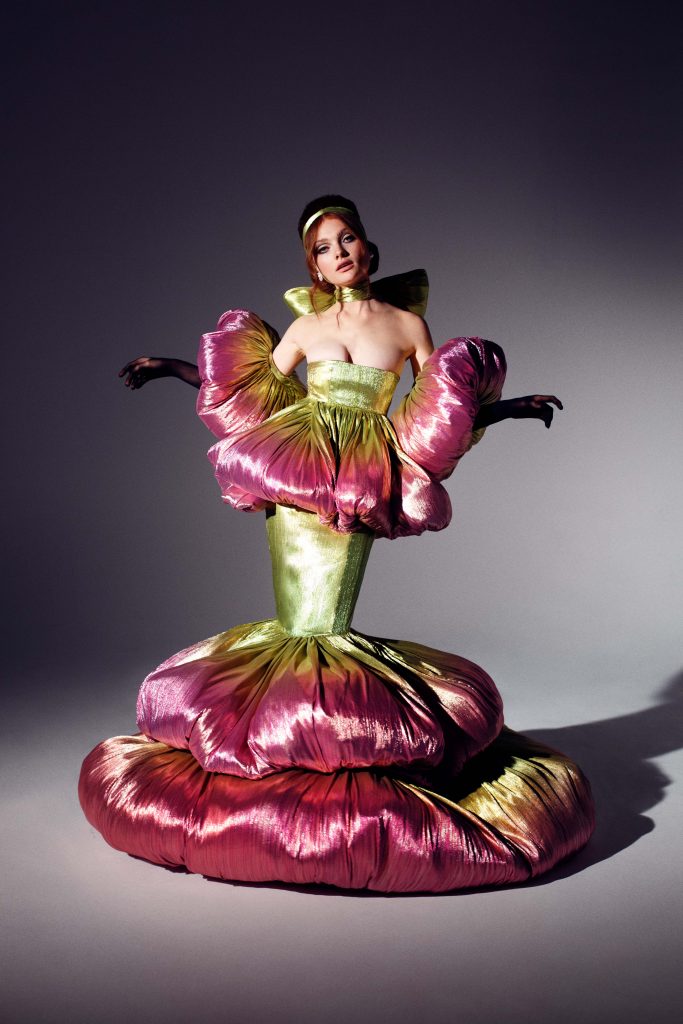
The Peony dress by Miss Sohee, 2020 graduation collection ‘The Girl in Full Bloom’. Photograph by Daniel Sachon.
However, this historical awareness has its limits. Despite its eagerness to situate Korean culture in its recent history, the exhibition is simultaneously astoundingly uncritical of that same history. For the most part, it follows the triumphalist narrative promoted by the government (indeed, the exhibition is funded by the Korean Ministry of Culture) which sees modern Korean history as simply innovative and meteoric. The so-called “Korean Wave” is presented as counter-cultural, yet it has always been deeply enmeshed in state and corporate backing. Even during the initial history lesson, the darker sides of modern history, from the brutal dictatorships to forced Americanisation are glossed over. This erasure makes for a comfortable narrative, especially for the oligopolist chaebol corporations like Hyundai and LG that have sponsored this exhibition.
The danger in this highly sanitised approach to something so fundamental yet broad as culture itself is that the very subjects depicted by the exhibition become essentially illegible. For example, a key sentiment that pervades the most popular Korean films and TV shows from Parasite to Squid Game is a profound ennuie produced by a society that has modernised far too quickly and has left far too much behind. Parasite is about a poor family that has failed to keep up in the ever-accelerating rat race of Korean capitalism. Whilst the exhibition apotheosises the modern Korean axiom of “ppalli-ppalli” (meaning “hurry, hurry”) as symbolic of Korea’s hyperspeed progress, the protagonist of Squid Game is depicted as someone who was too slow to adapt to modernity, and thus brutally cast out to near death. The exhibition idolises these masterpieces without ever acknowledging what inspired them. The result is at best a half-formed view.
I moved to the UK in 2012. On my way to the airport, I remember hearing what I thought then was a strange little song called Gangnam Style. When I landed, I spent the first year of my life here hearing my classmates mimic garbled lyrics from the song to me. In many ways, there was something deeply moving about seeing my own struggle of trying to integrate into global society while asserting my own identity mirrored by a similar trajectory taken by Korean culture. At the same time, as fun as the flashing lights and the perfectly polished celebrities were, the exhibition is a reminder of what I’m glad to have left behind – a hypercompetitive society, a refusal to acknowledge the past, a tendency to stifle heterodoxy – and also by omission, what Korea has left behind.
Words by Dowon Jung.
Image credits: Hallyu! The Korean Wave at the V&A, London, 24 September 2022 – 25 June 2023. Supported by the Ministry of Culture, Sports and Tourism – Republic of Korea and Genesis.
